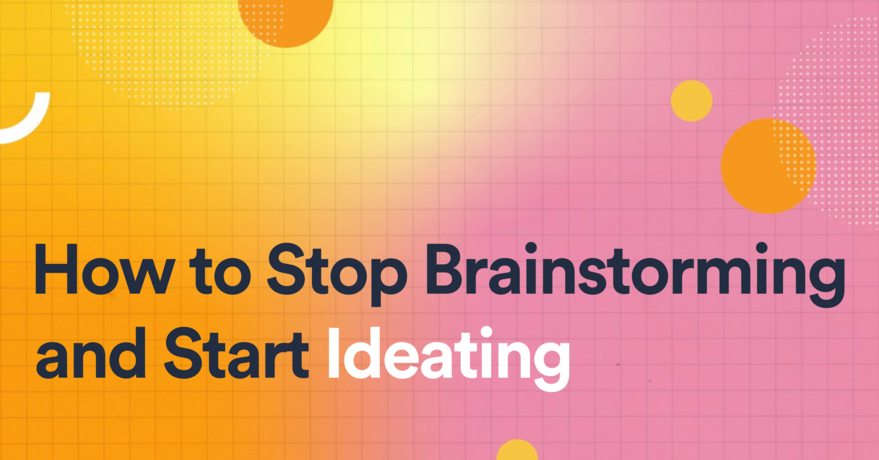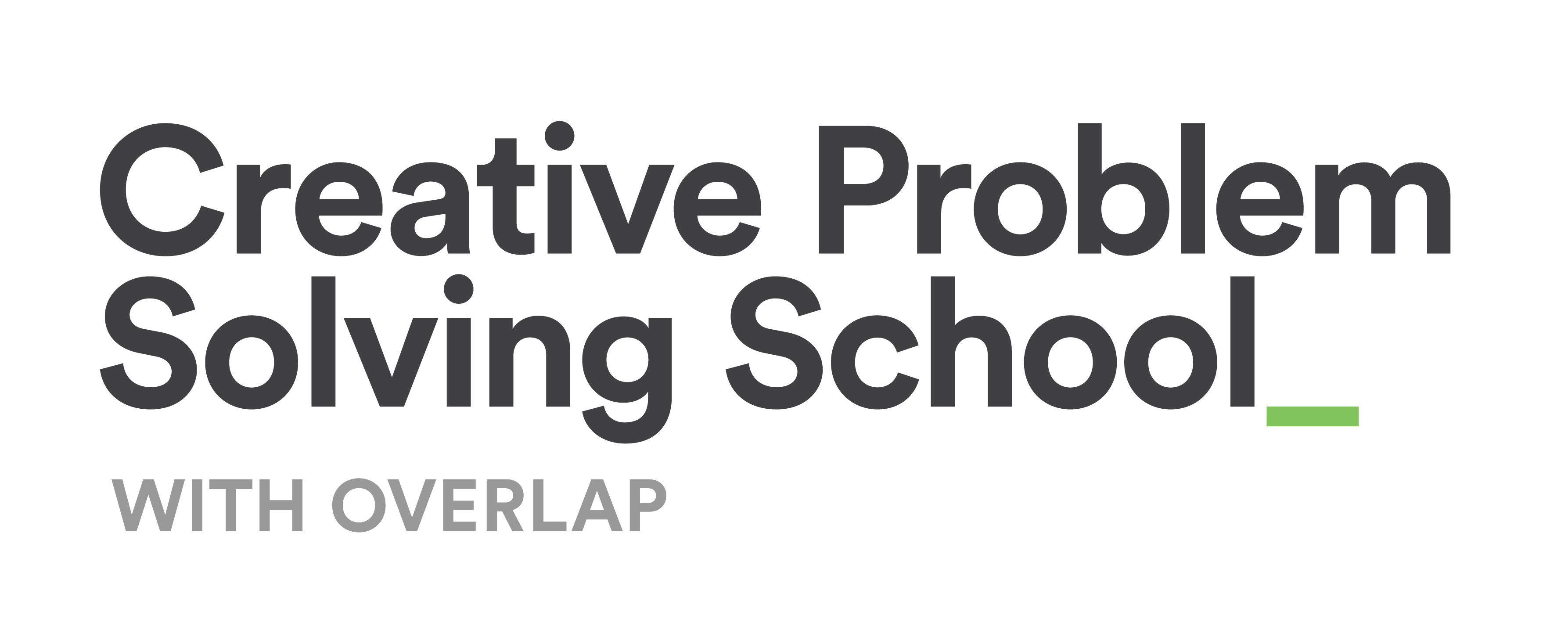Stop Brainstorming — How to Ideate With Empathy

There's a better way to brainstorm—a better method that focuses on communication, collaboration, and the real people who will be affected by the problems you’re trying to solve, as well as the solutions you come up with. Ideation is a design thinking technique for generating ideas that keep the human beings involved front and centre. In this post, we’ll share seven steps for how to ideate more effectively.
Brainstorming is a great way to come up with a lot of ideas, especially when all you need is a simple, surface-level solution. But many of the problems facing us today are not so simple; they involve many moving parts and various stakeholders, and the solutions may have a profound impact on people and communities—and that impact could be positive or negative.
When brainstorming, it’s often a race to come up with the first idea that will work, and in doing so, not all voices are heard. Traditional brainstorming also lacks the sort of debate and fine-tuning that comes with design thinking collaboration.
Using human-centred design methods and strategies is the best way to ideate. Learn how to ideate effectively with our seven human-centred ideation techniques.
How to Ideate
1. Establish a Safe Ideation Space
Ideation works best when everyone involved feels safe and comfortable. If you’re even remotely worried about being ridiculed, made fun of, or judged, you won’t be as open to expressing your ideas. The success of an ideation session rides on whether or not the group feels comfortable sharing and being open with one another, and that includes expressing ideas that may not make any sense in the moment.
For any of the ideation strategies to yield positive results, a safe space must be established first. Set guidelines at the beginning of any ideation session and review ideation best practices. No idea is a bad one. No matter how absurd an idea may seem at first, be open and accepting to all of them.
If you are leading a session, ensure that all voices are heard, not only the loudest ones. Take time to make sure everyone is able to contribute, and at the same time, don’t call anyone out for being quiet or not contributing as much as others. Doing so will only add to the discomfort.
2. Start Solo
When an ideation session begins, it’s impossible not to take in what other people are suggesting. An idea is internalized as soon as you hear it, and this can affect the direction your mind goes. The more you hear from other people, the more your ideas will be influenced by those ideas, which is a fantastic aspect of group ideation. But before your ideas are swayed or influenced in any way, it’s important to develop your own completely individual thoughts.
We always suggest that teams begin an ideation session by starting solo. This means addressing the problem at hand and brainstorming quietly on your own for a few minutes before you have the opportunity to be influenced by other ideas. The “start solo time” of a brainstorming session doesn’t need to take very long but it is a critical step in the ideation process that will help ensure unique ideas are formed and all voices are heard.
The start solo portion allows all members of the team, no matter their personality type, to contribute to the ideation session before the louder voices inevitably take charge.
💡 Learn more about the importance of starting solo: 6 Reasons to Start Solo in Idea Generation.
3. Utilize Multiple Ideation Techniques
Ideation isn’t limited to one technique or a single rigid process. There are a range of ideation techniques you and your team can employ to keep things interesting.
Changing up your ideation techniques will help you uncover unique ideas while also keeping the entire group engaged.
For example, you might ask: “how could we solve this problem if we had absolutely no limitations? What if money, time, or resources didn’t matter? What if we had superpowers? What if magic was possible? What ideas come to you when all barriers are removed?”
Another ideation technique is free association, where you begin with a starting point and continue to connect ideas as they freely come to you, branching off from the original topic. Don’t worry about how everything connects or whether your path fully makes sense at this point. Allow one thought to lead to the next. What does X make you think of? Where does your mind go? Where does your mind go after that?
Don’t limit yourself to the same techniques every time, and continue to try new ways of uncovering ideas. When you try something new, ask your team or the group for feedback. Did they enjoy that ideation technique? Did it help them discover anything new and exciting?
We shared and outlined a list of our favourite ideation techniques in a previous article: 12 Powerful Idea Generation Techniques.
4. Focus on Quantity, Not Quality
When it comes to most things in life, quality is more important than quantity, but that’s not the case for ideation. When you ideate, you want quantity—as many ideas as possible.
We have a phrase here at Overlap that came from one of our dear friends, Linda Carson.
How do you catch a big fish? You catch a lot of fish and throw back the little ones.
This is exactly how ideation works. In order to come up with great ideas, you need a lot of them. Many of them will be completely no good. But that’s absolutely okay. You’re looking for a big one—that big, solve-all-of-your-problems fish of an idea. You’re far more likely to find an unexpected idea by starting with a larger quantity to work from.
Start with many ideas and refine them later.
5. Drop Assumptions and Judgements
When it comes to ideation, there are no bad ideas. That’s because even the “bad ideas” can lead you to unexpected, wonderful places.
Do your best not to hold back. Don’t worry about what might seem right or what is even possible. This is a time to question your assumptions and ask questions like: What if we did the opposite of what we think we should do?
To help yourself and those around you freely express any idea, hold back any judgement. You can assess and fine-tune the ideas later. For now, what matters is freely coming up with as many unique ideas as possible.
💡Cultivating Empathy in the Workplace—Today’s #1 Skill
6. Set Time Limits
We did say that quantity was the goal, but at some point, you need to switch from ideation to sorting through all of those ideas and prototyping the best ones. The ideation process can go on for as long as you will let it. To ensure you’re utilizing everyone’s time effectively, set time limits on each portion of the ideation session as well as the session as a whole.
Of course, we’re all for being flexible and agile, but you should follow some general guidelines. Set an ideation agenda in advance and do your best to stick to it. You may go off course now and again depending on the ideas you come up with as well as the needs of the group, but still go into it with a plan and do your best to follow it.
7. Collaborate: Debate, Combine, and Extend
The beauty of ideation comes from working together. You don’t have to rely on your ideas alone. You get to build off of other people’s ideas, and you can blend, combine, or add to ideas as much as you need or want to.
Remember: it's not a competition. No one is trying to come up with the best idea, and no one takes ownership over their ideas. It’s a team effort, and everyone wins by coming up with a great idea that will solve the problem at hand, no matter where it came from.
Look for ways to utilize multiple ideas together. How can one idea enhance another? How can you blend two or more ideas to create something even better?
Continue asking questions and questioning your assumptions. What happens if you turn your ideas upside down? What happens when you do the opposite of what you thought? What could you add to a specific idea? What would you want to change about a specific idea? What happens if you look at your problem from another person’s perspective?
So long as it’s friendly and cordial, don’t be afraid to allow a little bit of debate to ensue. It doesn’t mean you are disagreeing if you push back, question, and debate to further your ideas as a group. Just remember to always be respectful and ensure you aren’t being judgemental. Questioning an assumption or asking questions about an idea is far different than judging an idea or ruling it out entirely.
Continue Developing Your Ideation Skills
Ideation is a skill you can continue to improve upon with ongoing practice. In addition to practicing ideation techniques and running ideation sessions, training is available to help you enhance your process and acquire new skills.
Overlap’s Creative Problem Solving School developed a course designed to teach individuals and teams how to go beyond simple brainstorming to ideating with intention, empathy, and an open mind. The course, Building Innovative Ideas (202), covers tools for ideation and how to prototype new solutions to your toughest problems. You’ll deepen your understanding of how to come to better solutions through ideation, structured collaboration, and prototyping.
Have a question about ideation or want to know how to enroll in one of our courses? Reach out to our team at any time. We’re continuing to add new courses to our library based on time-tested, human-centred design practices. Check our course listing for the latest online or live courses available. You should also check out our FREE online course on Empathy in Action, which includes a module specifically on ideation.

0 comments
Leave a comment
Please log in or register to post a comment